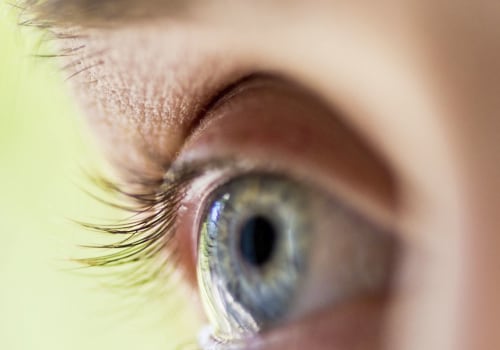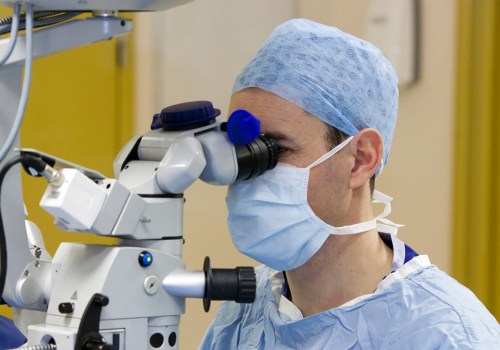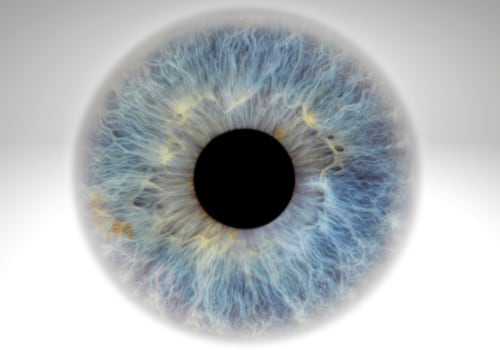If you are about to undergo cataract surgery, you must ask yourself: What do you see? After all, you will see a lot more clearly than you have in the past.
It is also essential that you are comfortable and happy with what you will be able to see. You may also want to learn about the various types of cataract surgery and how you can prepare yourself for the procedure.
Preparing for cataract surgery
Preparing for cataract surgery can help ensure a smooth and successful procedure. Following the guidelines provided to you by your eye doctor will go a long way toward ensuring a positive outcome.
You should take a few days off work and rest up. Try relaxation techniques and music to help you relax. Avoid lifting heavy objects. You may only be able to drive or operate machinery after the procedure.
Your doctor may prescribe topical drops or medications to reduce swelling. Antibiotic eye drops are also advised to prevent infection.
The surgeon will likely give you an A-scan to measure the size of your eyes. This is an easy way to determine the correct IOL for you.
Getting a good night's sleep before your surgery is essential. Most patients can return to their normal activities within two days. However, it is advisable to plan ahead and arrange for someone to drive you home after the procedure.
While most surgeries are painless, you should expect slightly blurry vision for a few hours afterward. Also, avoid lifting or touching your eye. In addition, make sure to wear sunglasses outdoors.
Aside from getting good rest, you should also follow your doctor's recommendations. These include no smoking and drinking for at least 24 hours before the surgery. Alcohol can interfere with healing and result in complications.
You may also be asked to sign a consent form. Talking to your family about the procedure is also a good idea. Asking questions can ease any anxieties you may have.
Choosing a reputable doctor will also pay off. Make sure you research your options and look for patient testimonials.
The medical team should provide you with excellent customer service. You will feel more at ease if you feel like they know what they are doing.
If you have questions about your cataract surgery, ask the staff. They are usually happy to help.
Although the procedure is relatively easy, recovery can last up to a month. During this time, you may feel a little tired.
Seeing three or more colors
Many patients with cataract surgery experience visual illusions and changes in their color vision. In particular, many patients report seeing three or more colors during the operation. The objective of this study was to determine whether patients who see multiple colors during cataract surgery have increased color perception.
The authors used a reliable color perception test to assess color vision outcomes. The test was designed to detect small changes in hue or saturation. Several studies have examined the effects of cataracts on color vision sensitivity. However, no studies have shown a significant decrease in color vision sensitivity with cataracts.
This study included a group of 200 cataract surgery patients. All of the participants had a capsular-fixated hydrophobic acrylic lens. Most of the cataract operations were performed under topical anesthesia. However, some were under oral sedation. Sedation was used to reduce anxiety, as well as to relax the patient.
The most common colors observed during surgery were pink, red, blue, and yellow. These were followed by green, purple, and orange. Although patients were asked to describe their visual experiences, the combination of colors that they saw did not depend on the shape that they saw.
Twenty-nine of the patients had preoperative visual acuity of 0.2 or less.
Eight of the patients had undergone cataract surgery in both eyes.
Four of the patients were under the age of 60. During the operation, six of the procedures took more than 15 minutes.
During the surgery, the majority of patients had pleasant visual experiences. Interestingly, some of these patients had unpleasant optical illusions. When patients reported unpleasant experiences, they were anxious. Approximately 1% of the participants reported visual illusions that were either transient or unpleasant.
The majority of the patients reported experiencing pleasant light and color experiences during phacoemulsification under topical anesthesia. In addition, patients reported seeing structures and gradations of colors and neutral and intense colors.
Three of the nine patients who saw three or more colors during the procedure reported unpleasant colors. Another seven saw no colors.
Feeling pleasant, neutral, or unpleasant.
During cataract surgery, patients report a variety of visual experiences. For example, some patients see bright lights or structures, while others see a calming visual experience. These light and color experiences may affect the patient's anxiety level during the procedure. Therefore, this study sought to evaluate the neurophysiological and self-reported response to emotional stimuli during cataract surgery.
Many patients reported pleasant, neutral, or unpleasant visual experiences during the cataract operation. Nevertheless, the difference between these three categories is only sometimes noticeable. Using the Late Positive Potential (LPP) event-related potential (ERP), the current study investigated the neurophysiological and self-reported responses of 200 cataract surgery patients.
Specifically, participants were asked to rate four blocks of 75 images on a computer screen. They were also instructed to touch each image in their dominant hand while they were still in a seated position. The COMPASS set contains 100 scenes, varying along two effect dimensions: valence and arousal.
Participants were grouped into three categories: female, male and non-anxious. Each participant was given a questionnaire that assessed a range of valence, arousal, and neurophysiological indicators of arousal.
Participants were asked to rate various visual experiences on a scale of 0 to 5 to test whether a visual experience is the best or the worst. An overall score for the visual experiences was obtained. Although the scores were varied, the most pronounced differences were seen in the presence of pleasant colors, the valence of excellent colors, and the arousal of an arousing color.
A study of psychedelic drugs such as LSD and lysergic acid diethylamide showed that visual sensations are produced in the brain. However, in this case, the effect of psychedelics on the visual experience was only temporary and occurred in a minority of patients.
This study demonstrates that the autonomic nervous system is sensitive to high-arousing stimulation. Furthermore, when cognitive interest is induced, the hedonic response to light phenomena is preserved, although this does not hold true when the patient is under sedation.
Taking care of yourself after surgery
After cataract surgery, it is essential to follow the surgeon's instructions to care for your eyes. The eye must be protected from irritants and infections while the eye heals. If you need help with what to do, ask your doctor.
You should also avoid bending over or lifting heavy objects for at least a week after surgery. Bending can raise the pressure on your eyes, which can interfere with healing. It's also essential to wear protective sunglasses. This will help protect your eyes from rubbing and dirt.
Your doctor may suggest that you wear an eye shield when you sleep. This will prevent rubbing and protect your eye from dust, debris, and pollen.
You should also take rest after your cataract surgery. You will be tired, so you shouldn't do any strenuous activity.
In addition, you should make sure to take naps when you're feeling groggy. Getting enough rest is very important in ensuring a quick recovery.
Your vision will be blurry for a few days after cataract surgery, so don't try to do anything that requires sharp vision. For example, you should stay seated when you put on your clothing. It would help if you also were careful when putting on your makeup.
Your doctor will likely prescribe anti-inflammatory eye drops. Using these every few hours will keep your eyes healthy and prevent infections. However, you should know that you'll need to use these for a few weeks to a month.
Depending on your doctor's instructions, you may need to return to work a few weeks after your cataract surgery. After that, you can return to work with the help of a friend or family member.
When taking care of your eyes after cataract surgery, you should follow the doctor's orders for eye drops and avoid touching your eyes. In addition, contact lenses should be removed before the procedure, and you should not eat or drink before the surgery.
As your eyes recover, you'll need to avoid bright fluorescent lighting and swimming and saunas. These activities can overwhelm your vision and can be a breeding ground for disease.



